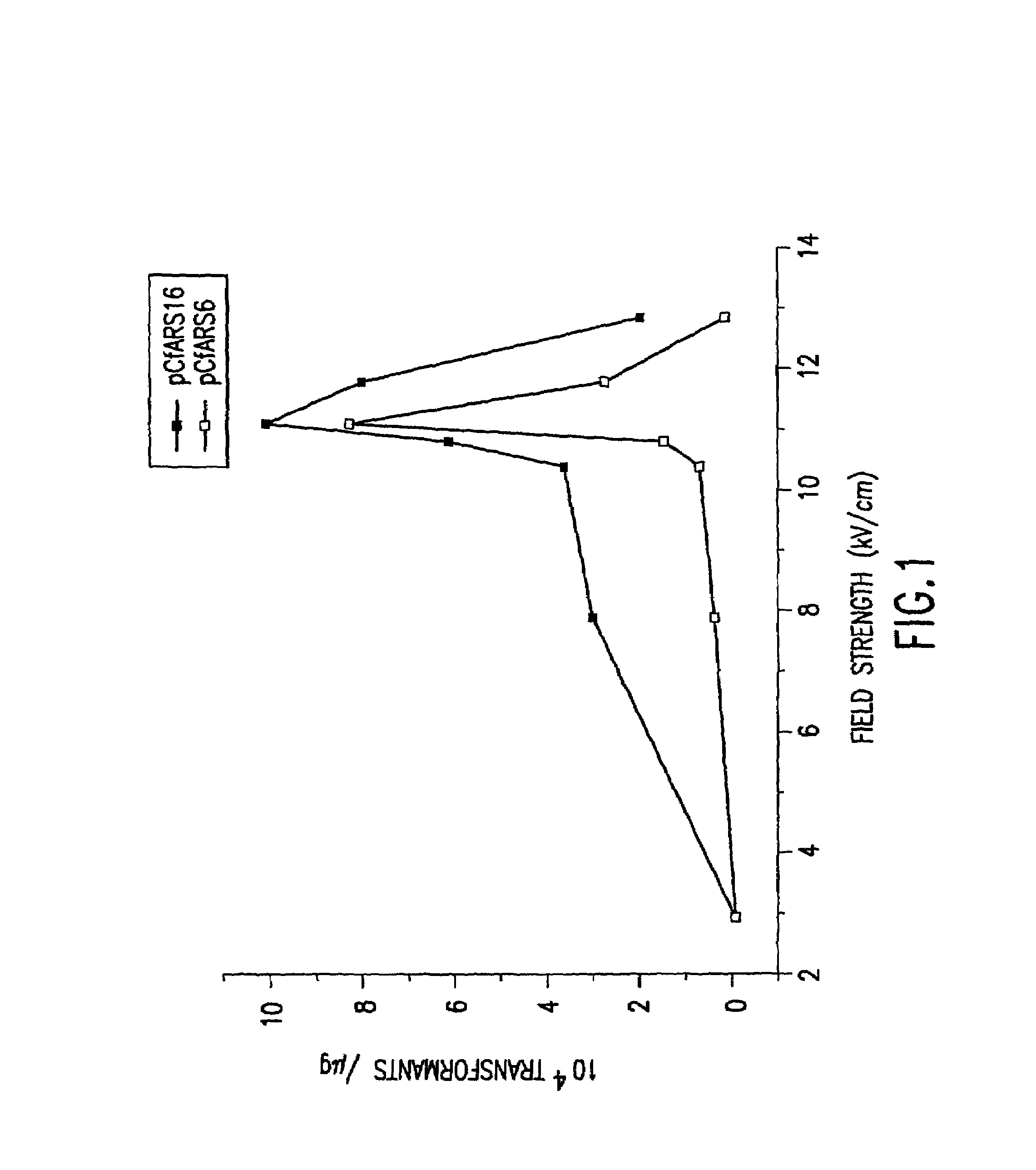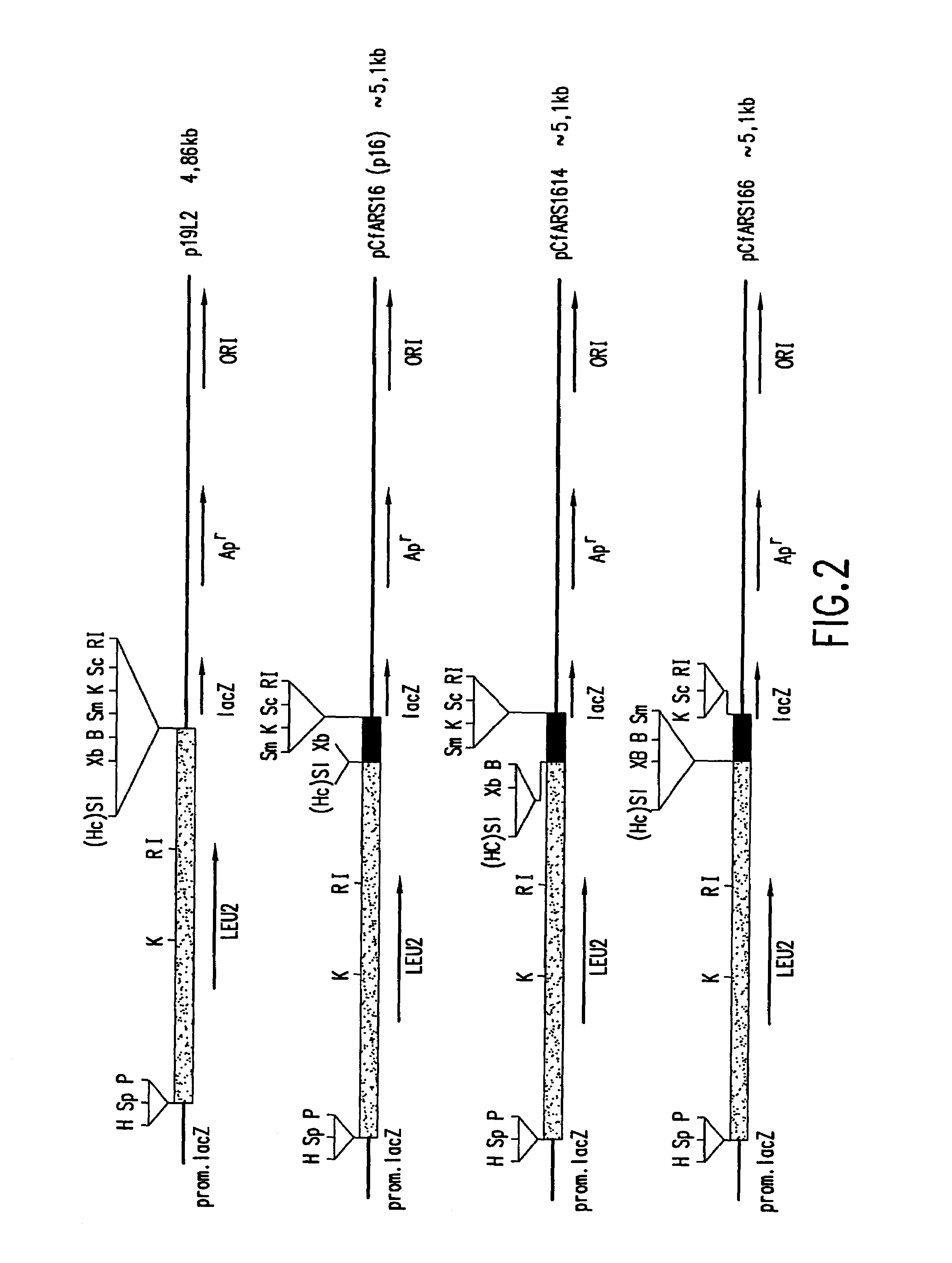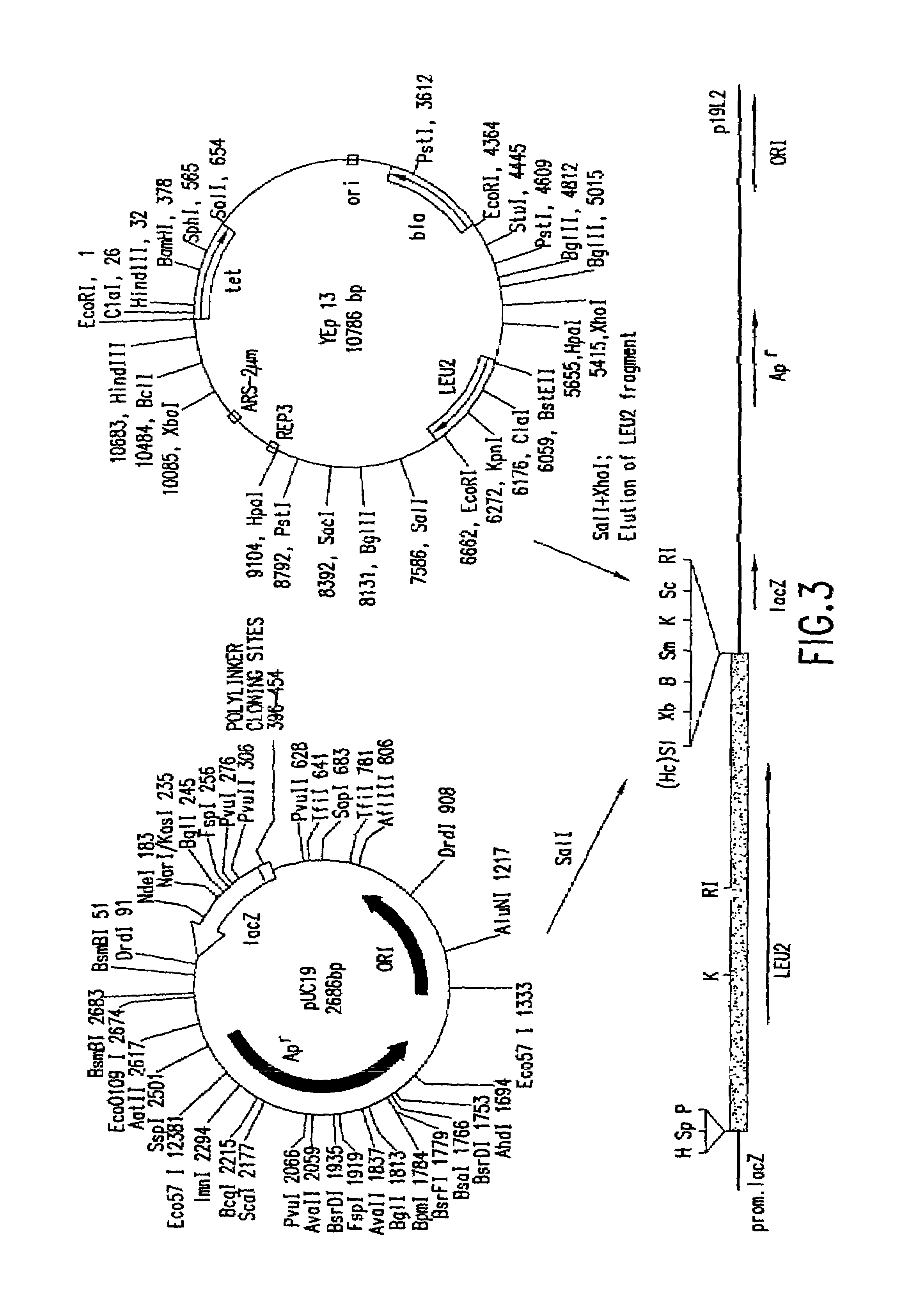Transformation systems for flavinogenic yeast
a technology of transformation system and flavinogenic yeast, which is applied in the field of yeast cell transformation and yeast transformation, can solve the problems of loss of hair, and affecting the development of yeast species as host/vector system for recombinant products, and affecting the production of recombinant products
- Summary
- Abstract
- Description
- Claims
- Application Information
AI Technical Summary
Benefits of technology
Problems solved by technology
Method used
Image
Examples
example 1
Leucine-deficient Mutants of C. famata VKM Y-9
[0223]A suspension of a two day culture of C. famata VKM Y-9 from a cell wort agar slant was mutagenized with UV light with a dose resulting in 10% cell survival. The cell concentration was 107 / ml. The duration of UV irradiation was 35–40 sec. After mutagenesis, the cell suspension was plated, calculating 200–300 viable colonies / plate, on agar containing synthetic modified Burkholder medium with leucine (40 mg / l). The medium contained (per 1 liter): glucose, 20 g; (NH4)2SO4, 3 g; KH2PO4, 0.5 g; MgSO4×7H2O, 0.2 g, CaCl2×6H2O, 0.2 g; Na2HPO4, 0.1 g; biotin, 1 μg; iron as the Mohr salt, 0.2 mg; trace elements H3BO3, 56 μg; CuSO4×5H2O, 39.3 μg; MnSO4×5H2O, 50.4 μg; (NH4)6Mo7O24×4H2O, 120 μg; ZnSO4×7H2O, 307.9 μg; agar, 20 g.
[0224]After 4–5 days of the cultivation at 30° C., the grown colonies were replica plated on medium without leucine. The colonies which were unable to grow without leucine, were picked up, streaked on the YPD medium and w...
example 2
Identification of C. famata VKM Y-9 leu2 Mutants
[0226]Identification of leu2 mutants was conducted by means of transformation of five isolated leu− mutants (## 3, 7, 12, 100, 105) with LEU2 containing plasmids. Two vectors were constructed for this purpose: recombinant plasmid PRpL2 and a standard yeast vector, YEp13. Plasmid PRpL2 (7.66 kb) contains the full sequence of pUC19 (bacterial), a 4.2 kb PstI fragment of S. cerevisiae DNA comprising the LEU2 gene and a 0.79 kb fragment of P. guilliermondii genomic DNA comprising a PgARS element (see FIG. 4).
[0227]Transformation of the selected leu2− mutants was carried out by the spheroplast method as described (Sreekrishna, K. and Kropp, K. E. Pichia pastoris. In: K. Wolf (ed.). Nonconventional Yeasts in Biotechnology, 1996, Springer, Berlin, 1996, p.215–226) with some modifications:[0228]1. A fresh colony of leu− mutant was inoculated into 3 ml of YPD and cultivated for approximately 24 h at 30° C. to saturation.[0229]2. 50–100 μl of ce...
example 3
Construction of a Candida famata VKM Y-9 Gene Library
[0250]The plasmid p19L2 (4.86 kb) (FIG. 3 and FIG. 8) was used as the vector for construction of a C. famata VKM Y-9 gene library (FIG. 9). The plasmid was obtained in the following manner: A SalI-XhoI fragment (2.17 kb) was isolated from the YEp13 plasmid of S. cerevisiae and was inserted into a SalI fragment of the bacterial plasmid pUC19 (FIG. 3 and FIG. 8). The plasmid p19L2 has been used for transformation of C. famata VKM Y-9 leu2 L20105 isolated (Example 1) as above. In the experiment which used the spheroplasts isolated from C. famata strain L20105 using the crude preparation of Lyticase (“Sigma”), the frequency of transformation was about 30 transformants per μg DNA whereas the use of the Lyticase preparation which is “partially purified,” resulted in a frequency of transformation of approximately 1.5×104 per μg DNA. In both cases more than 98% of the transformant colonies were small and less than 2% of them were large on...
PUM
| Property | Measurement | Unit |
|---|---|---|
| Electrical resistance | aaaaa | aaaaa |
| Electrical resistance | aaaaa | aaaaa |
| Electrical resistance | aaaaa | aaaaa |
Abstract
Description
Claims
Application Information
 Login to View More
Login to View More - R&D
- Intellectual Property
- Life Sciences
- Materials
- Tech Scout
- Unparalleled Data Quality
- Higher Quality Content
- 60% Fewer Hallucinations
Browse by: Latest US Patents, China's latest patents, Technical Efficacy Thesaurus, Application Domain, Technology Topic, Popular Technical Reports.
© 2025 PatSnap. All rights reserved.Legal|Privacy policy|Modern Slavery Act Transparency Statement|Sitemap|About US| Contact US: help@patsnap.com



